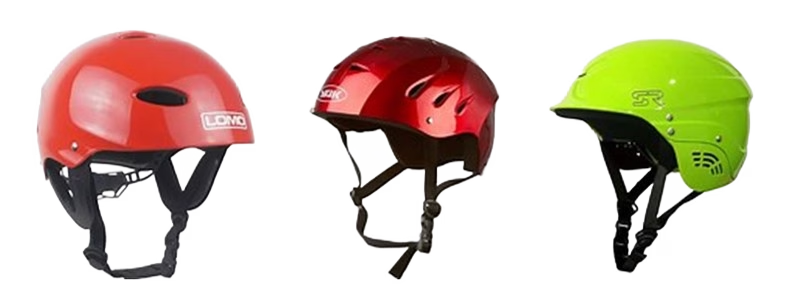
Just yesterday there was a Facebook post about a kayak fisherman who drowned. There was a picture showing the fisherman sitting inside his kayak with thousands of dollars of fishing equipment. The kayaker was not wearing any PPE (Personal Protective Equipment). You could not even see a life jacket in the picture. It’s the season for paddling sports- kayaks, canoes, and paddle boards. It is also the time of year that paddler deaths climb. While no parent in their right mind would turn a six-year old loose to run the family open bow runabout boat, those same people think nothing of turning their young children loose on a kayak or paddle board with no safety equipment.
The Evolution of Safety in Sports
What could be more manly than a gladiator? Imagine powerful men fighting to the death in an arena with people cheering them on. Make no mistake- a gladiator was the ultimate sportsman. But you can’t imagine two gladiators fighting to the death without also forming an image of their PPE (Personal Protective Equipment). Oh yeah buddy! They didn’t go out there without a helmet and a shield. Oh, they might have in the early years of the sport, but as the sport evolved, so did the gladiators’ protective equipment. It is like that with almost any contact or inherently dangerous sport. The first American football game was played without any protective equipment, just as the European footballers (soccer players) did. But European football doesn’t involve two teams lining up and rushing at each other head-first, so over time the helmet was introduced to protect the old noggin. Some sports have been quick to adopt helmets, but there was always resistance from people who thought it was a silly idea to protect their skull from impact. It often takes a while for some sports to demonstrate the need for a helmet. We are at that point with paddle sports. Most paddlers recognize the need to wear a life jacket, but only avid paddlers routinely wear a helmet.
Back in the early days of surfing, surfers didn’t wear any safety equipment. Today some surfing competitions require the use of safety equipment such as a surfing helmet, and prudent professional surfers also wear ear plugs and reef boots. It took almost 75 years to develop surfing safety equipment, but the smart surfers all wear helmets and boots.
So, what are we talking about today? How about helmets for paddle sport operators. They are finally coming into vogue, especially with whitewater and surf paddlers. Whitewater competitions require all competitors to wear helmets.
Why You Need a Paddler’s Helmet
A helmet for a paddler, at first glance, doesn’t seem to make much sense. You are already close to the water; even if you capsize you don’t have far to fall and water is pretty soft. So where is the danger? You are sitting on it; at least you are until you capsize. The Coast Guard statistics show that paddler drownings are increasing at a rate higher than any other type of vessel (powerboat, sailboat, etc.). Of those drownings, 90 percent were not wearing a life jacket. So how did the other ten percent die if they were wearing a life jacket? One of the answers is they were knocked unconscious by their own paddle craft. Although a life jacket will bring you to the surface if you are knocked unconscious, only a Type I life jacket will routinely hold your face out of the water. Paddlers don’t wear Type I life jackets; they are bulky and you can’t paddle while wearing one. If you don’t have a buddy nearby to pull your face out of the water if you are knocked unconscious, you will drown.
The key to surviving when you capsize is to always wear a life jacket and to reduce the chance of being knocked unconscious by wearing a paddling helmet. Wearing a device that will most likely save your life if a wave knocks your kayak into your head (as it is most likely to do) doesn’t make you a sissy. It makes you a smart paddler. Consider the energy held within even a small wave. A one-foot wave can slam your kayak into your head with more than enough force to knock you unconscious. Whenever you capsize, your paddle craft usually flips over. That flip can carry enough energy to knock you unconscious, and your head is often right there for that kayak or stand up paddleboard to land on. I hope at this point you can see a need for not only a life jacket to bring you back to the surface but also for a helmet to protect you from being knocked out by your own vessel. I was once performing a Vessel Safety Check on a boat, and the operator had zero life jackets aboard. His reasoning: he was a “world class swimmer.” I asked him how well he swam while unconscious. He probably didn’t rush out and buy some life jackets, but he didn’t pass the inspection either.
What do They Look Like?
Glad you asked. They are rather stylish and they don’t make you look funny at all.

They are lightweight, are vented to help keep you cool, and cost way less than a funeral. You can get one for $39.95, or you can get one for $399.95; the real expensive ones are for professionals who compete in whitewater competitions. There are three main kayak helmet configurations available to stand-up paddlers, kayakers and rafters. The most common are open face helmets that come in either the half-cut or full-cut configuration. Half-cut kayak helmets sit above the ears providing good protection for the skull as well as good drainage. Full-cut kayak helmets come down over the ears providing additional protection and insulation. Full-face kayak helmets provide protection to the jaw and lower portion of the face, but sometimes don’t drain as effectively and can be uncomfortable on the ears in rough conditions. These are more suited to experienced paddlers who need a great deal of protection.
Summary
While the Coast Guard recommends always wearing a life jacket when boating, as a Recreational Boating Safety Specialist I also recommend wearing a helmet when operating a paddle craft. Although this may not at first seem necessary, the fact that many paddle craft deaths involve the operator being knocked unconscious when they capsize makes wearing a helmet much more logical. When passengers are ejected from a moving boat they are usually thrown well clear of the vessel, but when a paddle craft capsizes it often lands right on top of the paddler and often hits them in the head.





J. Lee Austin
October 3, 2025 at 10:56 amThanks for another very informative and helpful article, Bob … could save some lives! You might relate to one of my many Close Calls … this one on a boat. Feel free to share it with your readers as a good example of Things Not to Do!
https://open.substack.com/pub/doc115/p/the-greedy-need-for-speed?r=18tk5o&utm_campaign=post&utm_medium=web&showWelcomeOnShare=false
Best of luck,
~~ Doc